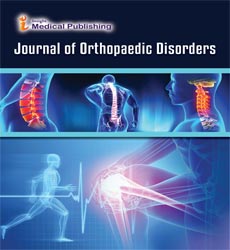Tuberculous spine and spine at risk management and comparative study
Abstract
The incidence of osteo-articular tuberculosis is on the rise in both the developed and developing world. Although complete disease cure may be achieved with chemotherapy, patients treated conservatively have an average increase of 15o in deformity and 3% to 5% of the patients end up with a deformity greater than 60o. Spinal tuberculosis remains as the commonest cause of kyphotic deformity in many parts of the world. This problem is accentuated in children in whom the deformity can worsen even after the disease has healed. Spine at risk signs 32 children (6-18 yrs. mean 13.6 years) and 54 adults (23-65 yrs. mean 45.5 years) who had significant worsening of the deformity were studied in detail. Some subjects developed a very severe deformity with a high risk of neurological deficit and a new terminology called 'Buckling Collapse' was introduced to describe this problem. Four radiographic signs called the "Spine at Risk Signs" were studied which helped to identify the subjects who had a higher risk of developing severe deformities, management concepts in spinal tuberculosis. In both paediatric and adult spinal tuberculosis, our studies on the role of chemotherapy and the indications for surgery are at par with various literature and reviews. The natural history of the disease in the lumbo-sacral vertebra and the good results achieved with chemotherapy were described through previous follow-up studies. Though spinal tuberculosis is predominantly an anterior disease, the role of posterior alone surgeries was analysed and presented. In severe kyphotic deformities, the technique of posterior only closing opening wedge osteotomy is presented in this article vis-a-vis anterior surgical comparison. It was found posterior only surgery had lower morbidity, better neurological recovery and better outcome of spine at risk modification.
Open Access Journals
- Aquaculture & Veterinary Science
- Chemistry & Chemical Sciences
- Clinical Sciences
- Engineering
- General Science
- Genetics & Molecular Biology
- Health Care & Nursing
- Immunology & Microbiology
- Materials Science
- Mathematics & Physics
- Medical Sciences
- Neurology & Psychiatry
- Oncology & Cancer Science
- Pharmaceutical Sciences
